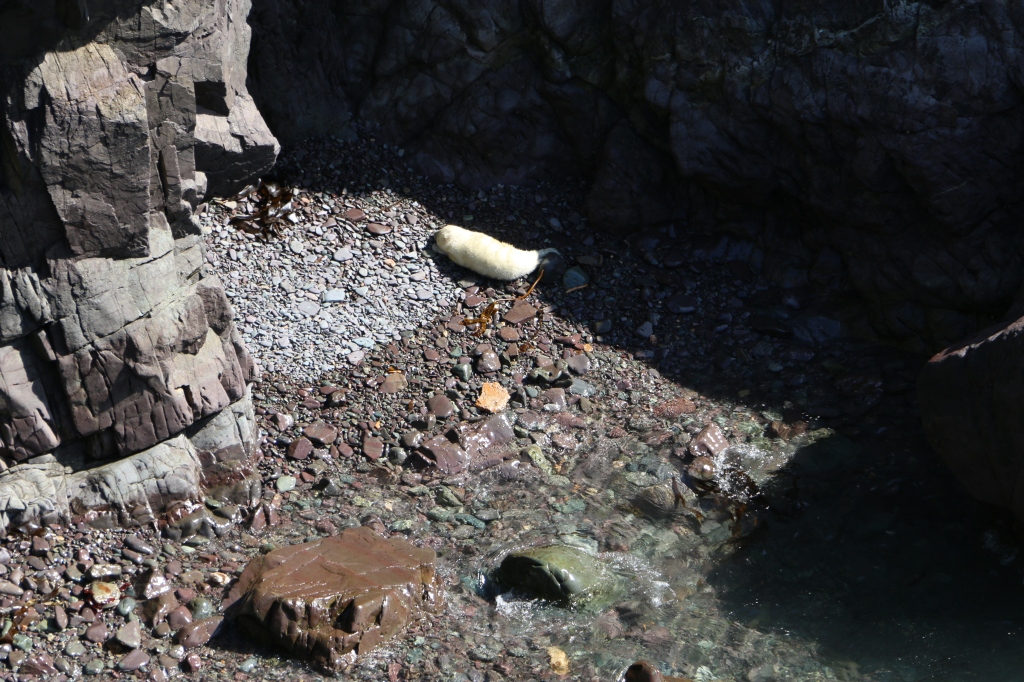Literally on hands and knees

But it was worth it


And then wonderful views overlooking Ramsey Island




And look who we saw! (from a great distance)


So… who was St Justinian?
Justinian was born in Brittany in the 6th century. At some point in his life, he made his way to Wales, where he settled on Ramsey Island.
Justinian soon became close friends with St David, the patron saint of Wales, and visited him often in the monastery where the cathedral now stands.
He was less impressed however by the lax behaviour of some of the monks and decided to isolate himself on Ramsey island. According to legend, he took an axe and chopped up the land bridge that linked the island and the mainland. As he worked, the axe became blunter and the lumps of rock remaining became larger and larger. They are still visible today in Ramsey Sound, where the waters foam over them at high tide. Followers joined him on the island but his actions didn’t go down well with everyone though. They soon turned them against him and they beheaded him!
To the astonishment of his killers,he picked up his head and walked across the sea to the mainland, and where he set his head down, another spring of water issued forth. This is the one enclosed today by a stone canopy.
A spring of water gushed up from the ground where his head first fell and this became the famous healing well.
Justinian was buried where the chapel now stands. Within its walls are some stone footings, which may mark his original gravesite. His body was removed to the cathedral, probably at some time before the end of the 15th century.
During the early medieval period, two chapels were built on Ramsey. One was dedicated to St Tyfanog; the other to St Justinian. There is no trace of either building today, though their sites are known.






What fun if we had such colourful characters around today. A beautiful part of the coast.
LikeLiked by 1 person
I agree, Janet! Thanks for dropping by.
LikeLike
Thank you for sharing this interesting experiences, Judith. Walking in the footsteps of Saints could be dangerous. Most of them died under horrible circumstances. Take care, and have a nice rest of the week! xx Michael
LikeLike
It was a dangerous life being a monk in days of yore – most of those canonised went through some pretty unpleasant stuff to gain the sainted status.
The walk looks beautiful and you picked an excellent day for it with those blue skies and seas. The seal was a nice bonus! xx
LikeLike
Loved the photographs and the legend Judith.. he does sound like he might have been a bit prickly… but all these centuries later he is still being talked about… ♥♥
LikeLiked by 1 person
Thank you, Sally. It’s a really beautiful walk – though a little rocky in places. Isn’t it a great legend?! xx
LikeLiked by 1 person
Wonderful… ♥
LikeLike
Thank you, Sally. xx
LikeLiked by 1 person
A great post and fabulous photos.
LikeLiked by 1 person
Thanks Mary. It was a marvellous and heart-warming day. Though I ached all over the day after. LOL xx
LikeLike
Beautiful west Wales!
LikeLiked by 1 person
Indeed!
LikeLike
gorgeous interesting post. tx for sharing a glorious day 🙂
LikeLike